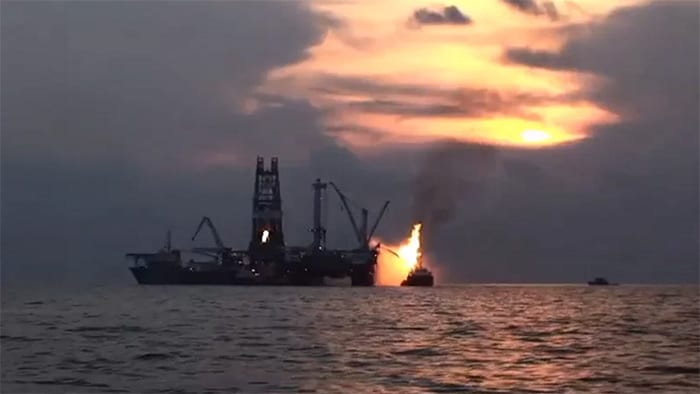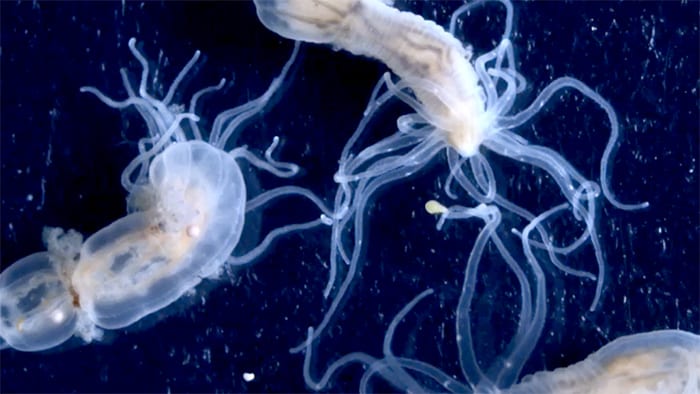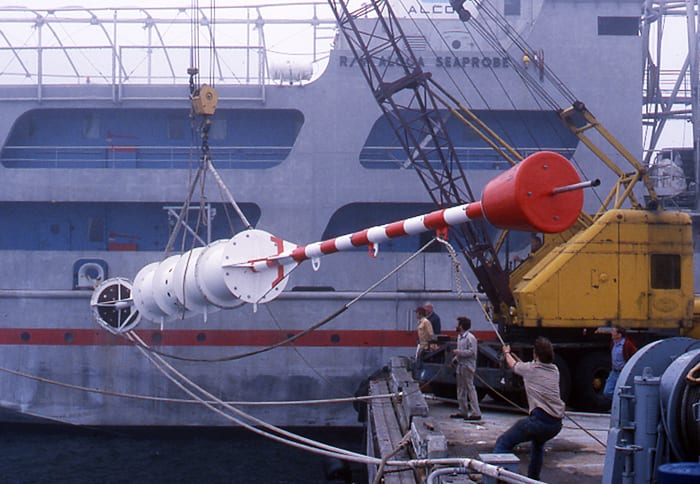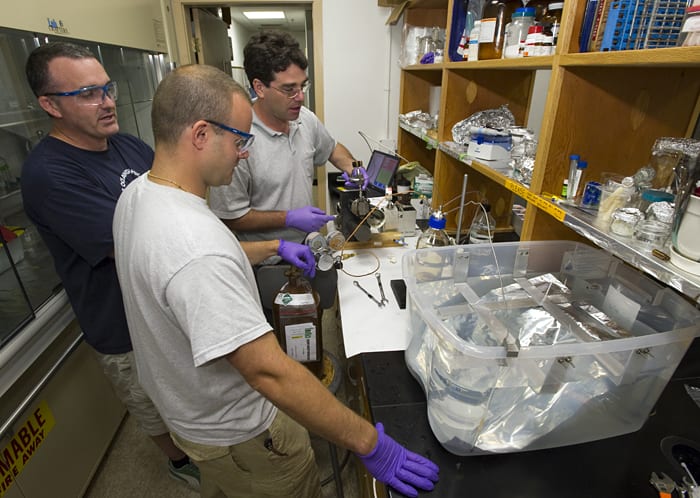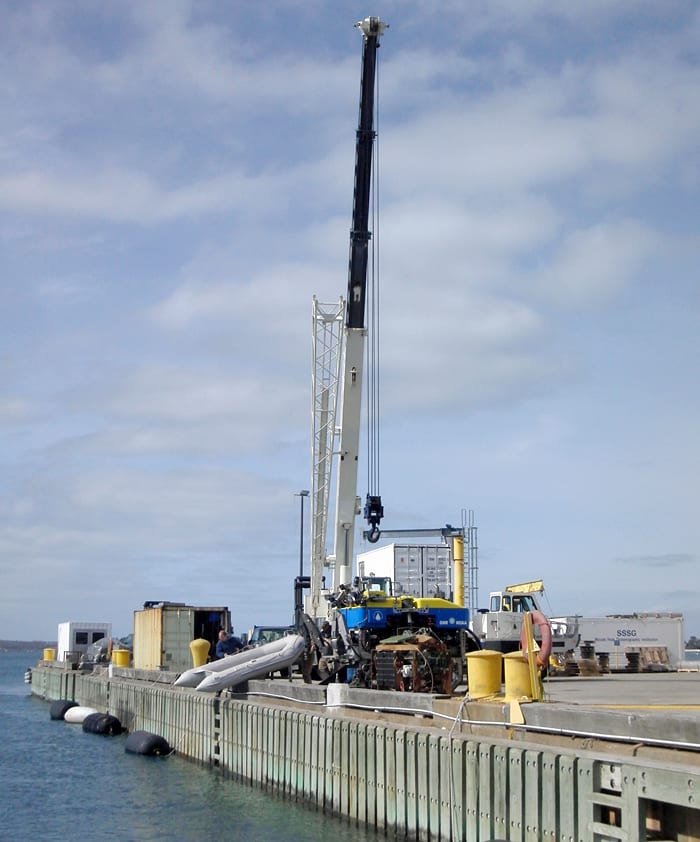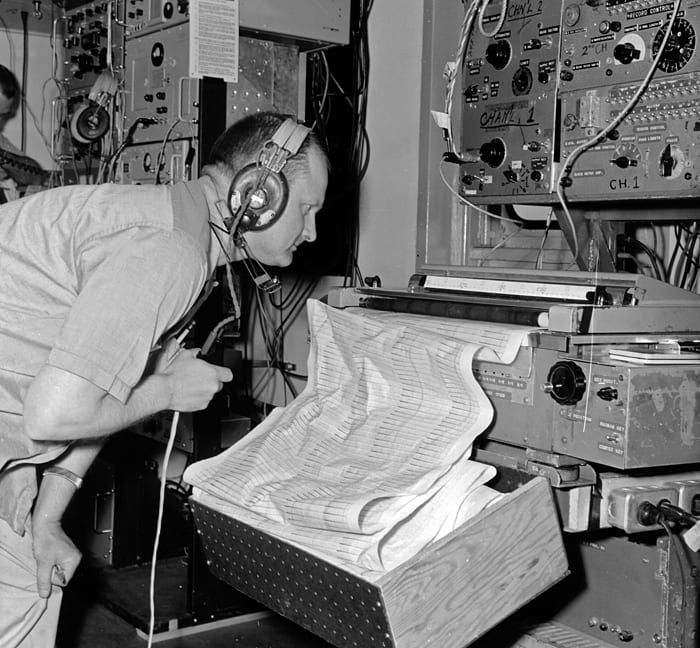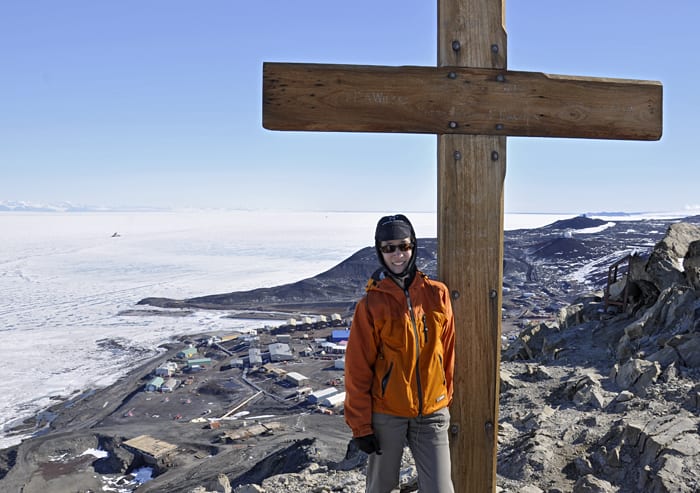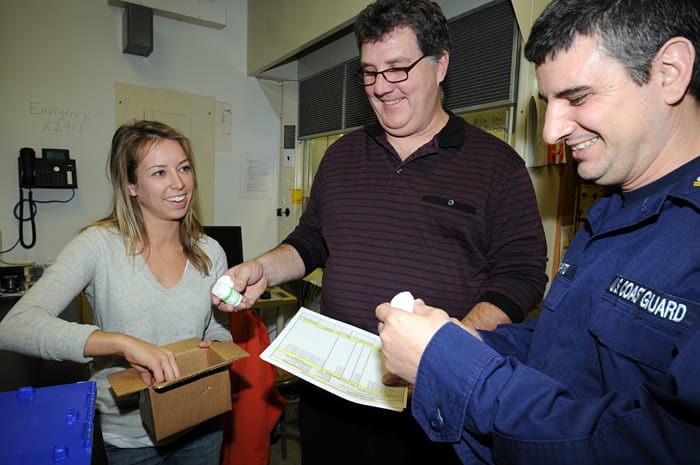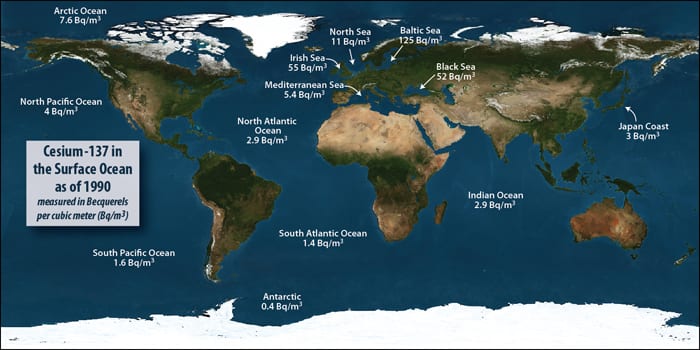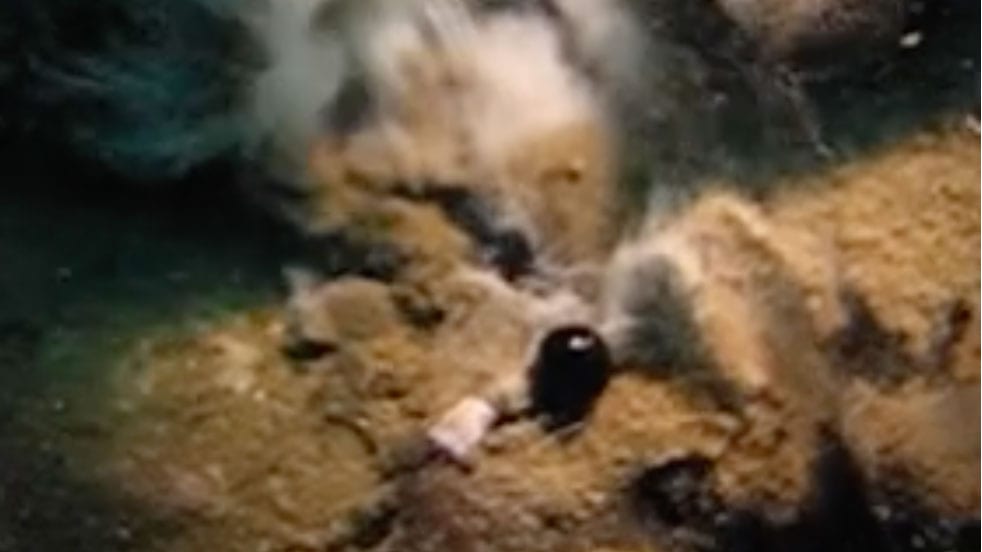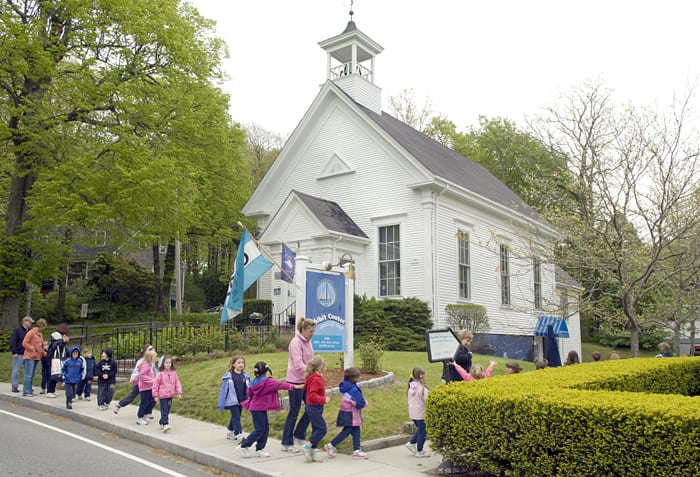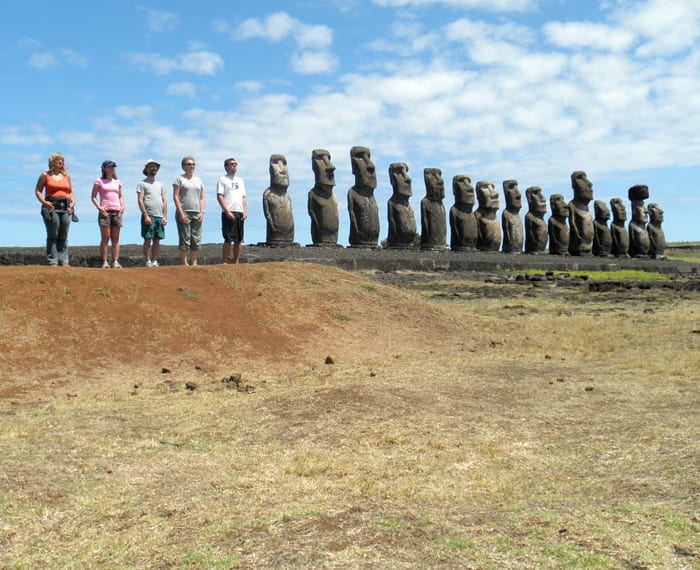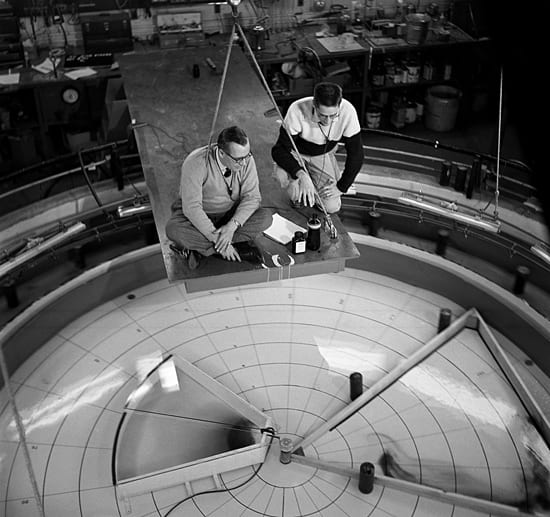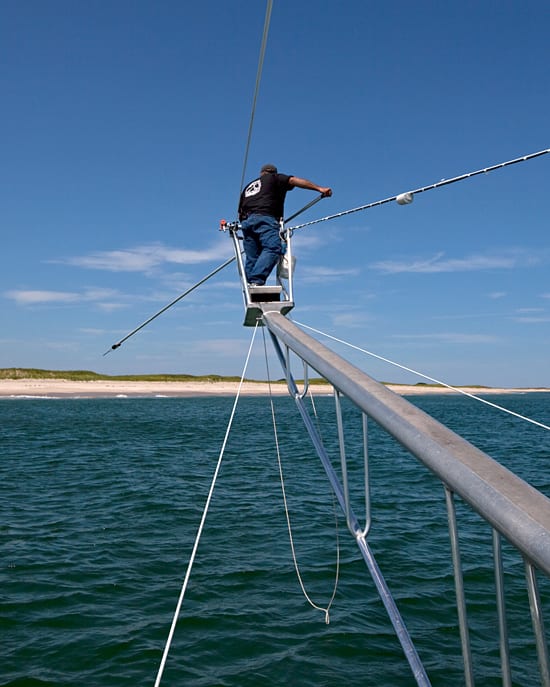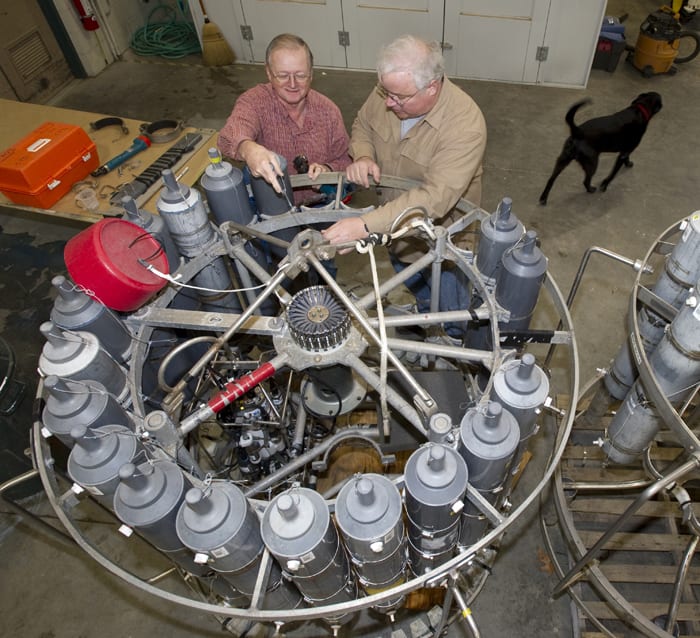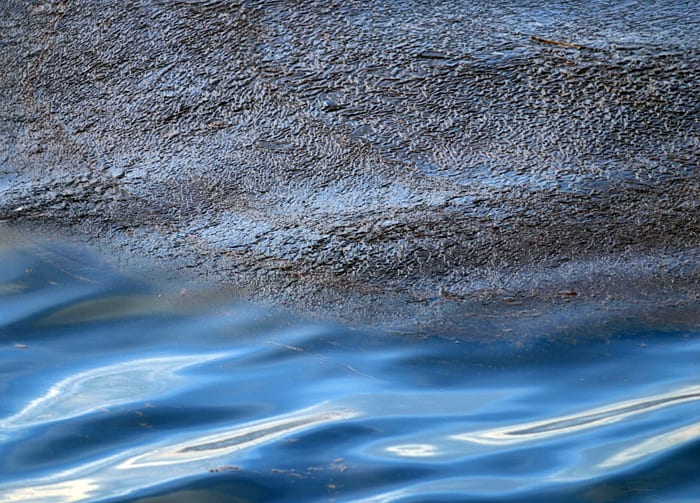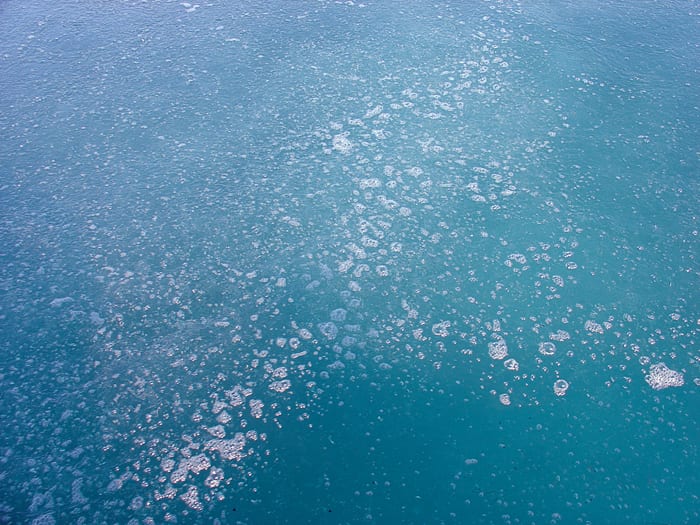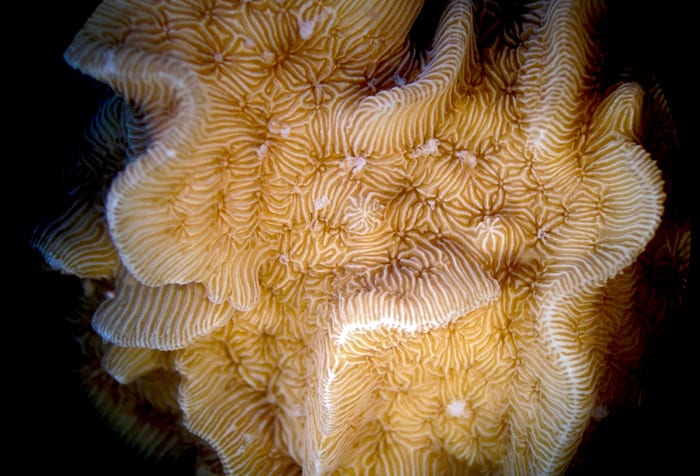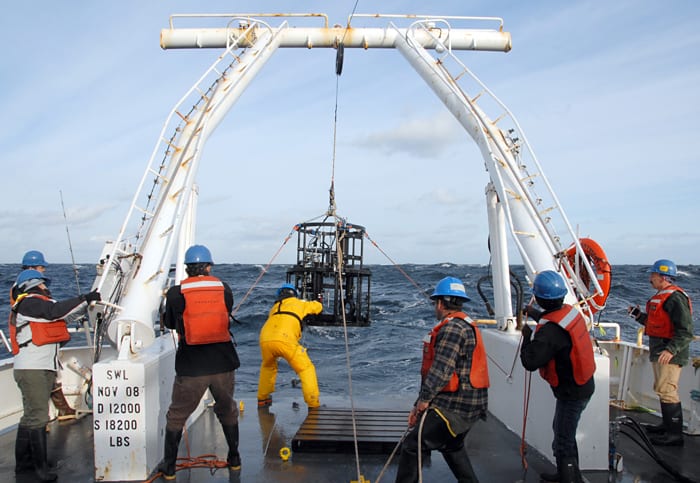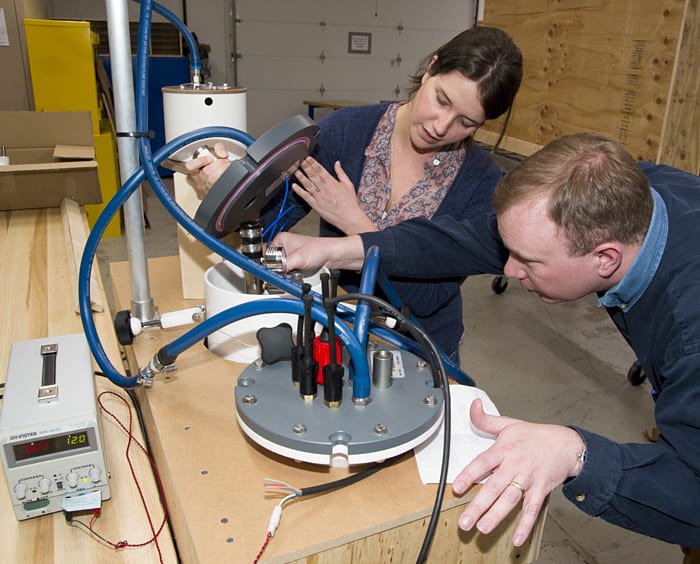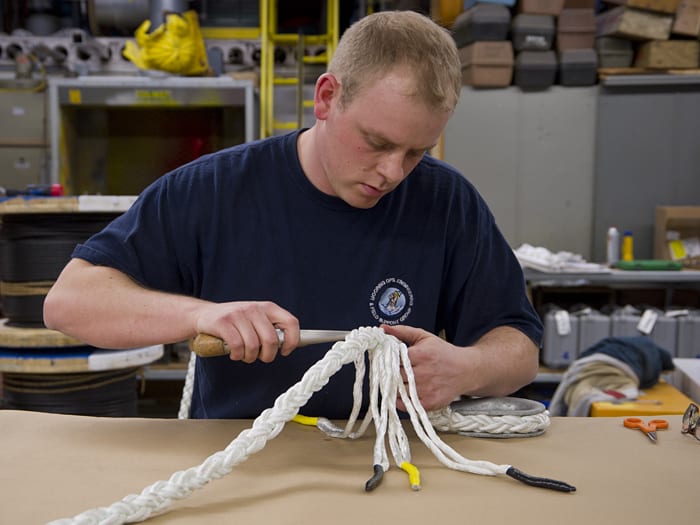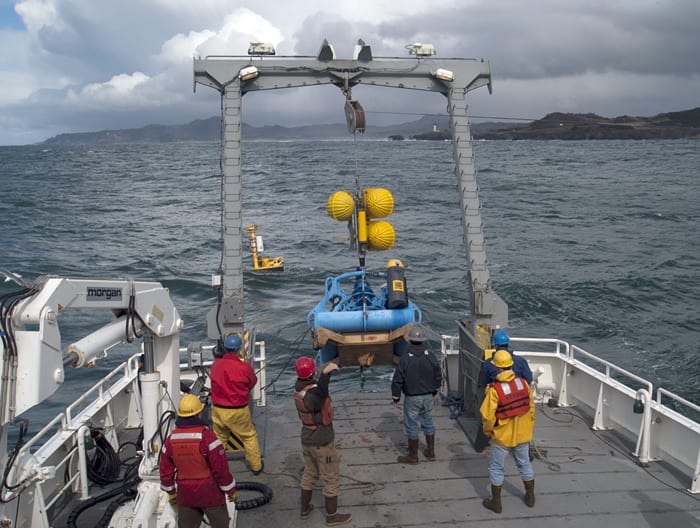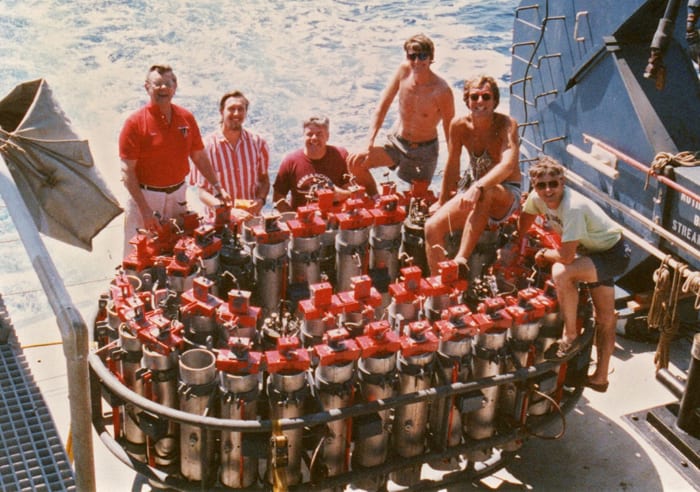Multimedia Items
How Much Oil?
Science in a Time of Crisis Part 2: How Much Oil? One of the most important questions arising from the Deepwater Horizon oil spill was exactly how much oil was…
Read MoreTracking the Currents
Concern about the impacts of the Deepwater Horizon oil spill centered on the northern Gulf of Mexico, but some feared that oil might also reach the U.S. East Coast, via…
Read MoreAssessing the Impacts
Science in a Time of Crisis Part 6: Assessing the Impacts Soon after the Deepwater Horizon blowout, scientists began exploring how the disaster might affect the Gulf ecosystem. Oil-drenched birds…
Read MoreSparring with JASIN
Between July and September of 1978 more than 50 teams of scientists from nine countries, including physical oceanographers from WHOI, participated in JASIN, the Joint Air-Sea Interaction Experiment. The experiment…
Read MoreTapping a Small, High-Pressure Keg
WHOI researchers (l to r) Chris Reddy, Sean Sylva, and Jeff Seewald prepare to tap into the pressurized chamber holding material collected from the damaged wellhead at the Deepwater Horizon…
Read MoreReady to Launch
Team members ready the remotely operated vehicle (ROV) Jason for testing off the WHOI dock in March 2011 in preparation for an upcoming expedition. Engineers in the National Deep Submergence…
Read MoreOne Man’s Contribution
Research specialist and hydro-acoustics engineer Sydney “Bud” Knott (above) is considered the father of modern echo-sounding. In the 1950s, he was the principal developer, with Warren Witzell, of the precision…
Read MoreTop of the Hill, Bottom of the World
Biogeochemist Phoebe Lam took advantage of clear conditions to climb Observation Hill, adjacent to McMurdo Station in Antarctica. Lam and her team are working with three other institutions to determine the…
Read MoreKeeping Track
In February 2011, research assistant Catherine Carmichael and research specialist Robert Nelson transferred possession of critical oil samples and chain-of-custody records to U.S. Coast Guard Petty Officer John Agapito (right)…
Read MoreChernobyl’s Ocean Legacy
Twenty-five years ago today, the Chernobyl nuclear power plant in Ukraine exploded and burned, creating what was at the time the largest accidental release of radiation to the environment. Ken…
Read MoreSeafloor Oil Seep
Dave Valentine and his scuba-diving team at the University of California Santa Barbara collected oil leaking from a seafloor seep. The white material clinging to the seafloor is made of…
Read MoreExplore Ocean Science
Visit the Woods Hole Oceanographic Institution’s Ocean Science Exhibit Center, now open for the season, where you can discover the world of ocean science. Featured exhibits include a full scale…
Read MoreHappy Easter (Island)
Conditions change markedly moving west across the South Pacific from Chile, where coastal waters are filled with essential nutrients–including nitrogen, phosphorus, and iron–to Rapa Nui (Easter Island), where nutrients are…
Read MoreStudying the Stream
WHOI physical oceanographer Alan Faller (right) and a visiting colleague conduct a circulation experiment circa 1957. Building on early studies of the Gulf Stream, Faller’s lab did illustrative experiments on…
Read MorePatience in the Pulpit
Captain Bill Chaprales of Cape Cod Shark Hunters prepares to tag a white shark off Chatham, Mass., in 2010. Captain Chaprales has worked with biologists Simon Thorrold, director of WHOI’s…
Read MoreIngenuity and Innovation
Research associates George Tupper (left) and Marshall Swartz check a CTD rosette, which measures the salinity and temperature of seawater at various depths, as Swartz’s dog Little Bear takes a…
Read MorePortrait of a Spill
This photo of oil and water in the Gulf of Mexico, taken in June 2010, recalls the historic spill that spread millions of gallons of oil in the three months…
Read MoreSanta Barbara Oil Seeps
There’s an oil spill every day off the coast of Santa Barbara, Calif., where oil is seeping naturally from cracks in the seafloor into the ocean. Lighter than seawater, the…
Read MoreFolds Within Folds
What seems like a fractal landscape of mountains and canyons is actually a “corrugated coral,” a reef-building species with a hard skeleton, photographed under a microscope. Pockets of tiny white…
Read MoreNot Always Smooth Sailing
Georges Bank near Cape Cod is well known for it’s fish and its rough seas. In 2010 biologists Peter Wiebe and Gareth Lawson took a research team to Georges Bank…
Read MoreAll Systems Go
WHOI engineers Kate McMonagle and John Lund work on an instrument that measures the concentration of carbon dioxide in both the air and the surface water. It is one of…
Read MoreNice Splice
Engineering assistant Christopher Ross splices a “hardeye” (galvanized thimble) into 7/8-inch, 8-strand nylon line in the WHOI rigging shop. After positioning the hardeye, he spliced the rope back into itself–about…
Read MoreEndurance Testing
Workers from WHOI and Oregon State University deploy a Multi-Function Node (MFN) from the fantail of the R/V Wecoma near Newport, Oregon, in March 2011. After entering the water, the…
Read MoreA High-Impact Career
Don Koelsch (far left) and other WHOI engineers and seismologists with the Near Ocean Bottom Explosives Launcher (NOBEL) system on the fantail of R/V Atlantis II in 1991. Koelsch helped…
Read More
